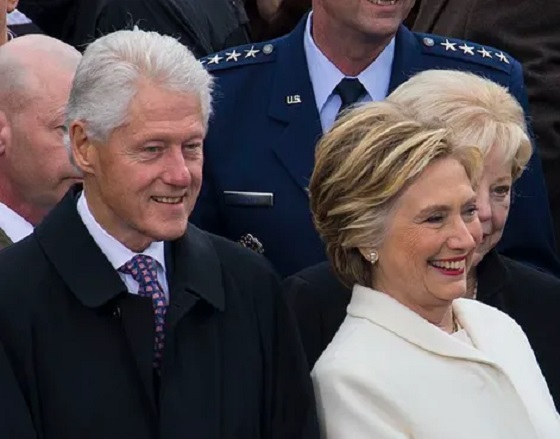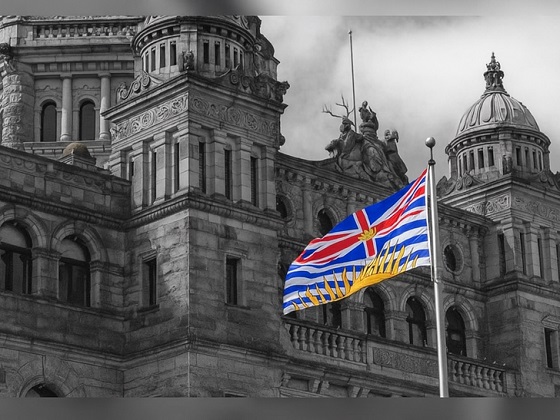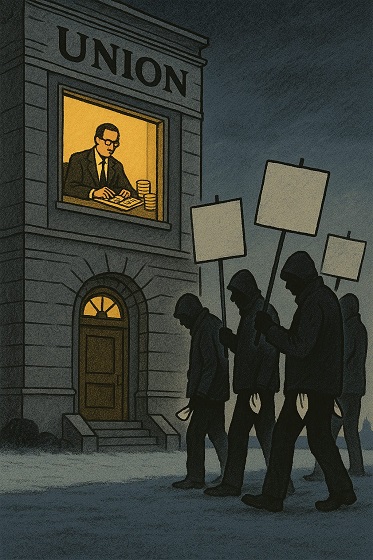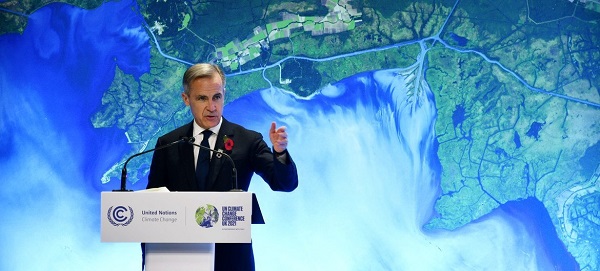International
10 reasons Donald Trump is headed for a landslide victory over Kamala Harris
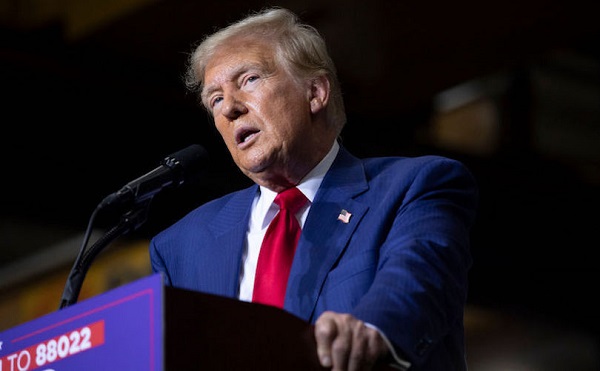
From LifeSiteNews
By Stephen Kokx
Republicans voting early, Democrats’ dislike for Kamala Harris, and polling and gambling numbers are all signs that the former president will win the election.
There is one week left in the presidential race and by all indications Donald Trump is headed for a landslide victory.
Many people I talk to tell me that they are fearful that it will be stolen from him. Here’s why I don’t think that’s likely at this point.
First, there are more registered Republicans in battleground states like Pennsylvania, North Carolina, and elsewhere than there were four years ago. This is a built-in statistical advantage for Trump.
🚨 BREAKING: LAST-MINUTE PENNSYLVANIA GOP SURGE in voter registration for the last week.
🔴 REP: +36,507
🔵 DEM: +19,744Per @UPTGOP, these are *backlogged* registrations.
— Eric Daugherty (@EricLDaugh) October 28, 2024
North Carolina 🌄
Mail: 134,428 ballots
Early In-Person: 2,162,661 ballotsBallots by party registration:
🔴 Republican 34.3% | 789,048 votes (+102,419)
🔵 Democratic 33.6% | 772,899 votes (+89,634)
⚪️ Other 32.1% | 735,142 votes (+96,868) pic.twitter.com/OoYfaa79ER— VoteHub (@VoteHubUS) October 25, 2024
Second, early voting and mail-in voting show that more Republicans are casting their ballots before Election Day than Democrats this year, which has not been the case in previous presidential races.
ELECTION ALERT: Nevada GOP leads Democrats in early vote and absentee balloting by a statewide margin of 32,000
— Election Wizard (@ElectionWiz) October 28, 2024
BREAKING: Pennsylvania Voter Registration Update 10/28 Shows Massive Surge for GOP
🟥GOP: +36,507 (+16,763)
🟦DEM: +19,744*This marks the new best single week of 2024, beating the records from the last two weeks.
— Election Wizard (@ElectionWiz) October 28, 2024
Through 11 days of early voting in NC, Republicans still lead for the first time ever. Democrat ballots are down 350,000 versus 2020.
A sweeping Republican victory is at hand IF WE: keep voting, vote early, and volunteer to GOTV. https://t.co/O53s2yhmBY#ncpol pic.twitter.com/CSRDd1CKUj
— Dan Bishop (@danbishopnc) October 28, 2024
The Trump county of Waukesha, Wisconsin has a higher mail-in ballot return rate than deep-blue Dane.
The red county of Brown has a higher return rate than Blue Milwaukee.
— Eric Daugherty (@EricLDaugh) October 28, 2024
Analyst Mark Halperin has predicted that if those trends continue, Trump will be declared the winner relatively early after polls close next Tuesday.
BREAKING: Donald Trump is set to become the next president of the United States, early voting data reveals.
This stunning revelation comes from veteran political journalist Mark Halperin.
“Make no mistake,” Halperin says, “if these numbers hold up in the states where we can… pic.twitter.com/eVGpxJYT5t
— The Vigilant Fox 🦊 (@VigilantFox) October 23, 2024
Third, key Democratic voting blocs aren’t enthusiastic about Harris, especially black and Hispanic men, who Trump has made historic gains with.
Dekalb in GA is at 38.7 percent turnout
White turnout in Dekalb is 50.4 and black turnout is 35.8
Population of Dekalb
Black (non-Hispanic): 53.7%
White (non-Hispanic): 29.6%Vote share :
Black – 43.6%
White – 38.69%White voteshare is outperforming black relative to their…
— Indian American Voice (@Freespeech212) October 26, 2024
That fact was recognized by Barack Obama a week ago when he told the media that “the brothas” do not have the same “energy” for Harris as they did when he himself ran for president.
Barack Obama SOUNDS THE ALARM, says energy is down with black men:
“That seems to be more pronounced with the brothers…”
He then says black men should vote for Kamala because she knows the “struggles” of being black.
Pure identity politics from Obama. pic.twitter.com/LvlSUVZKBx
— Charlie Kirk (@charliekirk11) October 11, 2024
Obama’s comment did not go unnoticed. During an MSNBC town hall at a barbershop in Philadelphia, black males told reporter Alex Wagner they were “offended” by Obama lecturing them how to vote.
@WagnerTonight visits a West Philadelphia barbershop to talk with Black men about the role gender plays in the 2024 election, Obama’s recent remarks and their thoughts on supporting Kamala Harris. pic.twitter.com/HM4qpRIBKl
— MSNBC (@MSNBC) October 23, 2024
Left-wing MSNBC anchor Andrea Mitchell has also admitted that Harris has a “big problem with men,” as have other websites.
Fourth, if you look at where Trump is campaigning this week, you can only conclude that his internal polling indicates he has shored up enough support in key battleground states that he can afford to go elsewhere to expand the map.
To be sure, he will still be visiting Wisconsin, North Carolina, and other Midwestern states over the next seven days, but he’s also headed to New Mexico, where, according to one poll he is within the margin of error.
Recent polling shows that 45th President Donald Trump is closing in on Democratic candidate Vice President Kamala Harris, with just a three-point difference between them in the latest KA Consulting poll.
Trump is polling at 46% while Harris holds 49%, but the margin of error of… pic.twitter.com/D0223eyJdX
— Republican Party of New Mexico (@NewMexicoGOP) October 22, 2024
Trump’s decision is notable because New Mexico hasn’t voted for a Republican president since George Bush in 2004. Mark Halperin has said, “if Trump wins New Mexico, he’s going to win in a landslide.”
🚨 New Mexico is within the margin of error for Trump… It would be first Republican to win the presidential race in NM in 20 years.
It’s happening… History is meant to be broken! pic.twitter.com/bvaqPk9wDC
— Gunther Eagleman™ (@GuntherEagleman) October 22, 2024
Trump is also headed to Virginia, another historically Democrat state. Virginia elected Republican Glenn Youngkin in 2022. He is fighting to prevent illegal immigrants from voting and has instituted a number of other reforms that will likely have the effect of ensuring the count is accurate.
Trump’s daughter-in-law, Lara Trump, appeared with Youngkin in the state last week. It’s clear the campaign believes he has a chance there.
🚨 NEW 2024 Virginia GENERAL ELECTION POLL: QUANTUS INSIGHTS 🚨
🔵 Harris: 49%
🔴 Trump: 48%
🟡 Other: 3%725 LV | Oct 22-24 | MoE 3.6%
Sponsored by: Trending Politics NewsCross tabs and full report at 2pm CST. pic.twitter.com/5jsSo8doUT
— Quantus Insights (@QuantusInsights) October 25, 2024
Fifth, almost all polling data in recent days, even those from left-leaning organizations, shows a decisive break in Trump’s favor.
Trump now leads in all seven swing states according to the Real Clear Politics average.
This is a trend that began shortly after the vice presidential debate.
And if you’re somehow in the camp that Kamala’s interview with Fox News somehow helped her, good luck with that. pic.twitter.com/RpDIE5u1mS
— Joe Concha (@JoeConchaTV) October 17, 2024
Harris’ decision to skip the Al Smith Dinner and her awful appearances on Fox, MSNBC, and her CNN town hall with Anderson Cooper are likely to blame.
NEW: CNN’s Scott Jennings says Kamala Harris is a “double-threat” because she can’t think on her feet and can’t answer the expected questions.
CNN has railed on Harris after her town hall event.
Here are the top reactions:
6. Axelrod: She is word salad city.
5. Jennings:… pic.twitter.com/Mdrr46uzbz
— Collin Rugg (@CollinRugg) October 24, 2024
The “vibe shift,” as Tucker Carlson has called it, has been so dramatic that even liberal outlets like CNN are admitting that Trump very may well capture the popular vote.
🚨 CNN ANALYST: Trump has a real shot at winning the national popular vote. This is something he'd love to do. It would be historic.pic.twitter.com/oOADpzlJzm
— Eric Daugherty (@EricLDaugh) October 25, 2024
Michigan and New Hampshire are also states he has improved in in recent days.
#NEW MICHIGAN poll
🔴 Trump 50% (+1)
🔵 Harris 49%Last poll: Harris +1
Patriot Polling | 10/24-26 | N=796RV
— Eric Daugherty (@EricLDaugh) October 28, 2024
Starting to remind me a lot of the eve of 2016. Except this time he actually leads the other battlegrounds… https://t.co/ZIlxkBI2h1
— Eric Daugherty (@EricLDaugh) October 28, 2024
NEW HAMPSHIRE
Praecones Analytica / @NewHampJournal poll:Trump 50.2% (+0.4)
Harris 49.8%622 RV, 10/24-26
— Political Polls (@Politics_Polls) October 28, 2024
At least in 2020 there was a plausible explanation for Joe Biden’s supposed victory as many polls showed he was ahead going into Election Day. This time around, that argument is not on the table.
Sixth, Democrats have no end game. They are trying to link Trump to “fascism.” This is an awful closing message, especially for a candidate who promised to “unite” Americans. This shows how desperate they are.
Hillary Clinton, for example, went on MSNBC and laughably claimed Trump’s epic Madison Square Garden rally Sunday night was a Neo-Nazi rally. Why she didn’t use the term “deplorables” is beyond me.
Hillary Clinton popped up just in time to call (over) half the country, N*zis.
She says President Donald Trump is going to Madison Square Garden in my city—New York City—to re-enact the 1939 Madison Square Garden N*zi rally.
What an irresponsible and reprehensible thing to say. pic.twitter.com/1ZfCa7HHlc
— Rudy W. Giuliani (@RudyGiuliani) October 25, 2024
During its own coverage of the event, MSNBC ludicrously compared it a pro-Hitler gathering there in 1939 while failing to note that Bill Clinton himself accepted the Democratic Party’s nomination at the same arena in 1992.
NEW: MSNBC directly compares Donald Trump's Madison Square Garden rally to a 1939 N*zi rally, directly compares Donald Trump to Adolf H*tler.
You don't hate the media enough.
"But that jamboree happening right now, you see it there on your screen in that place is particularly… pic.twitter.com/iGY6Mph4Ms
— Collin Rugg (@CollinRugg) October 28, 2024
President Bill Clinton attending his Nazi Rally at Madison Square Garden in 1992. pic.twitter.com/gSqhlKBfLZ
— Dustin Grage (@GrageDustin) October 27, 2024
Even ABC’s Jonathan Karl couldn’t deny that the rally was a pivotal moment in the campaign.
“Trump has created a movement, there is no doubt. I cannot think of another Republican figure of my lifetime who could’ve come into a Democrat city like New York and put together anything like that,” he said.
ABC’s Jonathan Karl: "Madison Square Garden was PACKED… Trump has created a movement, there is no doubt. I cannot think of another Republican figure of my lifetime who could've come into a Democrat city like New York and put together anything like that." pic.twitter.com/ZrYuvHV9jw
— Charlie Kirk (@charliekirk11) October 28, 2024
Conservative Charlie Kirk has theorized that the constant Hitler references are intentional, and that Democrats are laying the groundwork for yet another assassination attempt.
The purpose of the Hitler messaging is very simple.
They want to create permission for someone to try and murder Trump while also creating urgency for their rank and file to commit micro actions of fraud on the ground.
If you believe you are actually running against Hitler,…
— Charlie Kirk (@charliekirk11) October 28, 2024
Only a campaign that realizes it is on its death bed does such desperate things.
Seventh, Democrats are admitting that Trump is doing exceptionally well.
Left-wing New York City Mayor Eric Adams told the press this weekend that Trump is not a fascist.
NYC mayor Eric Adams says Trump isn’t a fascist, rebukes comparing him to Hitler, says Trump should be able to safely have his rally at Madison Square Garden, condemns overheated rhetoric of fascism. This is well said: pic.twitter.com/2ExCPKiIqi
— Clay Travis (@ClayTravis) October 27, 2024
Progressive commentator Cenk Uygar commented that Trump “looked presidential and personable” during his Joe Rogan interview. He called Harris a robot who acts like a “talking point machine.”
WATCH: Even Cenk Uygur admits that Trump's podcast with Joe Rogan was amazing.
"I thought Trump looked presidential and personable. I hate that, but he did… Standard politicians including Kamala Harris are talking point machines, that's not what Trump is doing.
"He doesn't… pic.twitter.com/t30GypxSsF
— George (@BehizyTweets) October 28, 2024
Former CNN anchor Chris Cuomo, who relentlessly pushed the COVID shot and is now injured from receiving it, hosted a town hall with JD Vance on News Nation. Cuomo could not deny that Vance and Trump appeal to many ordinary voters.
Here’s my take on what just happened in my town hall with JD Vance. pic.twitter.com/yL47loL6vm
— Christopher C. Cuomo (@ChrisCuomo) October 25, 2024
If Adams, Uygar, and Cuomo are admitting this, then regular Americans, even those who have supported Democrats in the past, are thinking it too.
Eighth, the betting markets favor Trump.
BREAKING: Donald Trump winning in all the swing states as per betting markets. pic.twitter.com/UQHpAlvPRy
— DogeDesigner (@cb_doge) October 27, 2024
Alright, so this is a pretty unscientific way to gauge an election, but money talks, does it not?
If the oddsmakers are hedging their bets and predicting a Trump win, then chances are they know what they are doing. If they didn’t, they’d be out of business. I don’t think it is realistic to think they are up to some sinister game by tinkering with the numbers right now given all the other trends mentioned above.
Ninth, there is no obvious explanation for a Harris victory if a steal were to occur, as there is no voting bloc she can point to right now that could win the election for her.
Over the past two months, Trump has enlisted a small army of politicians, influencers, and media personalities to cast as wide a net for him as possible.
While Tucker Carlson is out riling up young male voters, Robert F. Kennedy Jr. is courting moderate Democrats and health-conscious medical freedom activists.
What’s more, while Tulsi Gabbard is on the stump speaking with women, Elon Musk is making it easier for tech executives and business owners to support Trump.
What segment of the voting population is left for Harris to convince in this last week of the campaign? The sponge has been rung dry and the constant heckling of her at her rallies suggests folks have grown tired of her constant lies and evasiveness.
Tenth, there is no “October Surprise” that could derail Trump’s campaign at this point, especially with voting already underway.
Trump has been in the public spotlight for well over 40 years. He is a known entity, and the American people are preferring him — yet again — to the Democratic option, despite his personal flaws and scandals.
It is simply not possible for Harris to get the polls to go back to even and then rally not just the Democratic base but crucial independent voters next Tuesday.
As Carlson said at a rally in Georgia last week, if the Deep State does cheat and Harris is declared the winner, the people won’t put up with it this time. It will be too obvious that it was fraudulent as all the traditional indicators show she is headed for an historic defeat. I could be wrong, and I have been before, but I’m more inclined today to place a bet on Trump on one of those websites than Harris.
espionage
Trump: “I HAVE JUST SIGNED THE BILL TO RELEASE THE EPSTEIN FILES!”
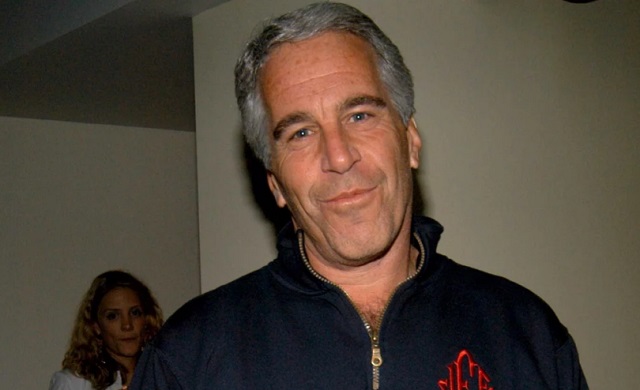
President Trump moved Wednesday to end years of secrecy surrounding one of the nation’s most notorious scandals, signing legislation that compels the Department of Justice to hand Congress virtually every scrap of material tied to Jeffrey Epstein. The president announced the move on Truth Social, writing, “I HAVE JUST SIGNED THE BILL TO RELEASE THE EPSTEIN FILES!”
Trump reminded supporters that he personally pressed House Speaker Mike Johnson and Senate Majority Leader John Thune to fast-track the legislation. “Because of this request, the votes were almost unanimous in favor of passage,” he wrote, pointing to the rare level of bipartisan agreement behind a bill that forces unprecedented transparency. The Epstein Files Transparency Act requires the DOJ to deliver all unclassified records — and as much classified material as possible — to Congress within 30 days. It also directs Attorney General Pam Bondi to provide lawmakers with a list of government officials and other “politically exposed persons” tied to Epstein within just 15 days.
The measure sailed through the House in a staggering 427–1 vote Tuesday before clearing the Senate unanimously. Its path to passage wasn’t always straightforward. For months, the Trump administration had sparred with lawmakers pushing for the release, with the president often calling the frenzy around “Epstein files” a Democrat-driven hoax designed to smear him.
In his Truth Social post, Trump leaned into the history, reminding Americans that Epstein “was charged by the Trump Justice Department in 2019 (Not the Democrats!)” and that the disgraced financier “was a lifelong Democrat” who poured money into Democrat campaigns. The president also pointed to Epstein’s well-documented relationships with high-profile Democrats, listing figures such as Bill Clinton — “who traveled on his plane 26 times” — former Treasury Secretary Larry Summers, activist billionaire Reid Hoffman, House Minority Leader Hakeem Jeffries, and Delegate Stacey Plaskett. “Perhaps the truth about these Democrats, and their associations with Jeffrey Epstein, will soon be revealed,” Trump wrote.
He added that the DOJ, under his direction, has already provided Congress nearly 50,000 pages of Epstein-related material — a stark contrast, he said, to the Biden administration, which “did not turn over a SINGLE file or page related to Democrat Epstein, nor did they ever even speak about him.”
For Trump, the transparency push is as much about exposing what Democrats don’t want voters to see as it is about delivering documents. He argued that the left had leaned on “the ‘Epstein’ issue” to distract from the “AMAZING Victories” of his administration. Now, with the bill signed and agencies under a firm deadline, he predicted the political tables are about to turn.
“This latest Hoax will backfire on the Democrats just as all of the rest have!” he wrote — a warning, and a promise, as Washington braces for whatever the next 30 days will reveal.
Crime
‘Modern-Day Escobar’: U.S. Says Former Canadian Olympian Ran Cocaine Pipeline with Cartel Protection and a Corrupt Toronto Lawyer

Ryan Wedding, believed to be hiding in Mexico, is on the FBI’s Ten Most Wanted Fugitives list. The State Department reward is up to $15 million for information leading to his arrest.
The U.S. government has unsealed fresh criminal charges and sweeping financial sanctions against former Canadian Olympic snowboarder Ryan James Wedding, alleging that he orchestrated the importation of up to 60 metric tonnes of cocaine a year into the United States and Canada, relied on a Toronto lawyer who, according to the U.S. Treasury, “has also helped Wedding with bribery and murder,” and, while under the protection of a former Mexican law-enforcement officer with ties to senior Mexican police officials, ordered dozens of sophisticated assassinations across Canada, Latin America and the United States — including the execution of a federal witness in Colombia, according to U.S. government filings.
According to Attorney General Pam Bondi, “Wedding controls one of the most prolific and violent drug trafficking organizations in this world,” working “closely with the Sinaloa Cartel, a foreign terrorist organization, to flood not only American but also Canadian communities with cocaine.” Bondi said Wedding’s organization is responsible for moving multi-ton quantities of cocaine each year through Mexico into Los Angeles, before the drugs are shipped onward to Canadian and U.S. cities in long-haul semi-trucks.
As reported by The Bureau, these trucks and routes are controlled by Indo-Canadian crime networks. The U.S. government says that a Toronto lawyer, Deepak Balwant Paradkar, “introduced Wedding to the drug traffickers that have been moving Wedding’s cocaine and has also helped Wedding with bribery and murder.”

FBI Director Kash Patel likened Wedding to a “modern-day iteration” of Pablo Escobar and Joaquin “El Chapo” Guzmán and said Wedding is responsible for “engineering a narco-trafficking and narco-terrorism program that we have not seen in a long time.”
The Justice Department and FBI say Wedding, who competed for Canada at the 2002 Winter Olympics in Salt Lake City, now heads a billion-dollar-a-year narcotics enterprise that engages in cocaine trafficking, contract killings and intimidation across the United States, Canada and Latin America. Another target named along with Wedding is a former Italian special-forces soldier who helps the network with training, according to the U.S. government.
Wedding is believed to be hiding in Mexico and remains on the FBI’s Ten Most Wanted Fugitives list, with the State Department increasing its reward to up to $15 million for information leading to his arrest.
Prosecutors say the new indictment centres on the January 31, 2025, murder of a federal witness in Medellín, Colombia. According to U.S. Attorney Bill Essayli of the Central District of California, Wedding “placed a bounty on the victim’s head in the erroneous belief that the victim’s death would result in the dismissal of criminal charges against him and his international drug trafficking ring and would further ensure that he was not extradited to the United States.” The victim was shot five times in the head while dining at a restaurant in Medellín and died instantly, Essayli said.
Justice Department filings and officials at today’s Washington news conference allege that Wedding and his associates used a fake gangland “news” site, The Dirty News, as part of the plot. The indictment states that co-accused Gursewak Singh Bal, a Mississauga man described as co-founder and co-operator of The Dirty News, agreed — “in exchange for payment” — not to post negative material about Wedding and instead published a photograph of the cooperating witness so that he “could be hunted down and killed.” Essayli said the site was seized pursuant to a federal warrant and is no longer online.
Ten defendants were arrested Tuesday in Colombia, Florida, Québec and Ontario. In a parallel move, the U.S. Treasury Department’s Office of Foreign Assets Control announced sanctions against Wedding and nine individuals plus nine entities, effectively cutting them off from the American financial system.
Treasury describes Wedding as “an extremely violent criminal believed to be responsible for the murder of numerous people abroad, including U.S. citizens,” who “continues to direct drug trafficking, murder, and other serious criminal activities” from Mexico while on the run. The sanctions designation outlines a trans-Atlantic laundering system that moves proceeds through cryptocurrency, high-end cars and motorcycles, and front companies on three continents.

Among those named by Treasury:
Edgar Aaron Vázquez Alvarado, a former Mexican law-enforcement officer known as “the General,” who allegedly uses sources within Mexican police agencies to locate targets for Wedding and owns fuel-sector companies in Mexico;
Miryam Andrea Castillo Moreno, Wedding’s wife, accused of laundering his drug proceeds and assisting in acts of violence;
Carmen Yelinet Valoyes Florez, a Colombian running a high-end prostitution ring in Mexico who allegedly assisted with the murder of a federal witness;
Daniela Alejandra Acuña Macias, a Colombian national described as Wedding’s girlfriend, accused of collecting hundreds of thousands of dollars from him and helping obtain intelligence on rivals;
Deepak Balwant Paradkar, the Canadian attorney who Treasury says provided “illegal services” beyond a normal lawyer-client relationship, including introducing Wedding to key traffickers, helping with bribery and murder, and allowing Wedding to eavesdrop on privileged calls with other clients he allegedly wanted to kill;
Rolan Sokolovski, a Toronto jeweler who Treasury alleges laundered millions through his “Diamond Tsar” business and cryptocurrency transfers; and
Gianluca Tiepolo, an Italian former special-forces member who allegedly helped Wedding park his money in exotic vehicles and ran tactical training camps for hitmen.
According to Treasury, Paradkar “introduced Wedding to the drug traffickers that have been moving Wedding’s cocaine and has also helped Wedding with bribery and murder,” in exchange for luxury watches and additional fees. Vázquez and his Mexico-based fuel firms, Sokolovski’s jewelry company, and a series of Italian and U.K. vehicle and motorcycle dealers tied to Tiepolo have all been designated under Executive Order 14059 as part of Wedding’s laundering apparatus.
At the Washington news conference, Royal Canadian Mounted Police Commissioner Mike Duheme emphasized the role of cross-border cooperation, saying: “International cooperation, such as our involvement in Operation Giant Slalom, is vital to our ability to stay ahead of organized crime.”
But that message of seamless cooperation contrasts with what senior U.S. law-enforcement officials were saying privately months ago.
As The Bureau previously reported, a senior U.S. source insisted there has been a troubling lack of RCMP collaboration in probing Wedding’s networks. Not only did the RCMP allegedly stonewall Drug Enforcement Administration requests six years ago to crack down on Canadian trucking routes tied to Wedding’s shipments through the United States, the source said, but there was also a lack of cooperation in targeting his violent cells inside Canada — where associates, competitors, and even an innocent Indo-Canadian family in Caledon, Ontario, mistakenly linked to a trucker from Wedding’s network, were brutally executed.
“We tried to work with RCMP on Wedding too, and they said, ‘No,’” a source aware of probes from three separate U.S. agencies said. “And it’s like — he’s killing Canadian citizens. He’s killed God knows how many. And you still don’t want to cooperate because of whatever grievance. But the RCMP threw up roadblocks. You’ve got to get past those things because Canadians are dying.”
More to come on this breaking story.
The Bureau is a reader-supported publication.
To receive new posts and support my work, consider becoming a free or paid subscriber.
-
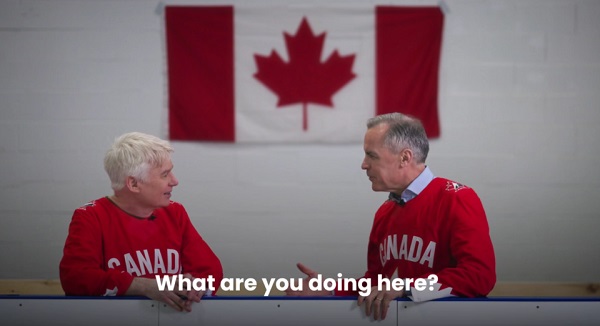
 Uncategorized2 days ago
Uncategorized2 days agoCost of bureaucracy balloons 80 per cent in 10 years: Public Accounts
-
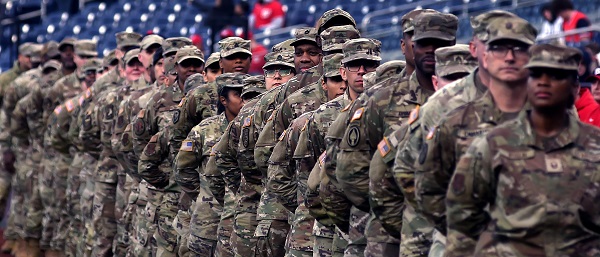
 Daily Caller1 day ago
Daily Caller1 day agoDemocrats Explicitly Tell Spy Agencies, Military To Disobey Trump
-
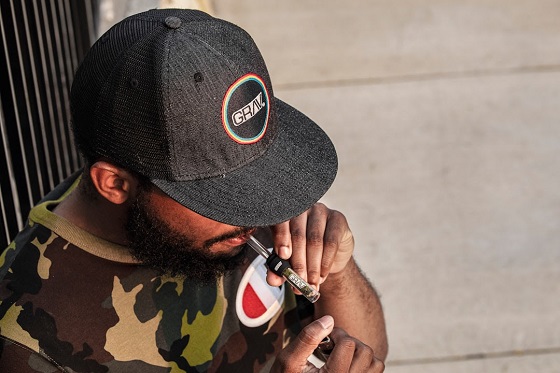
 Addictions2 days ago
Addictions2 days agoActivists Claim Dealers Can Fix Canada’s Drug Problem
-
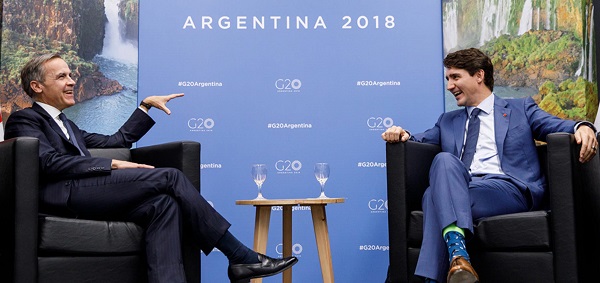
 Carbon Tax2 days ago
Carbon Tax2 days agoCarney fails to undo Trudeau’s devastating energy policies
-
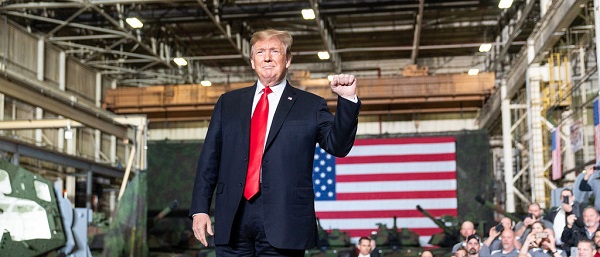
 Daily Caller1 day ago
Daily Caller1 day agoALAN DERSHOWITZ: Can Trump Legally Send Troops Into Our Cities? The Answer Is ‘Wishy-Washy’
-

 Alberta18 hours ago
Alberta18 hours agoAlberta on right path to better health care
-

 Alberta2 days ago
Alberta2 days agoEdmonton and Red Deer to Host 2027 IIHF World Junior Hockey Championship
-

 Alberta2 days ago
Alberta2 days agoAlbertans choose new licence plate design with the “Strong and Free” motto




